Magical Fluid
Coriolis (Gustave Gaspard de, 1792-1843) was a French physicist. In 1836, he was elected as an academician of the French Academy of Sciences. Since 1838, he has taught mathematical physics at the Paris Comprehensive Engineering School. In 1835, Coriolis pointed out in his paper "Equations of Relative Motion of Object Systems" that if an object moves relative in a uniformly rotating reference frame, there is an inertial force acting on the object that is different from the usual centrifugal force, and this force is called a composite centrifugal force. Later generations named the composite centrifugal force "Coriolis force" after him.
※※ Coriolis force ※※
The Coriolis force is called "Coriolis force" for short, which is mainly caused by the rotation of the coordinate system and the relative motion of the object in the moving coordinate system. The expression is Fc=2mV ×ω。
Among them, Fc is the Coriolis force, m is the mass of the moving object, and V is the vector velocity of the moving object, ω Is the vector angular velocity of the rotating system, × Represents the cross product of two vectors.
From the equation, it can be seen that when the direction of motion of the object is parallel to the direction of the rotation axis, the Coriolis force is zero.
Note: Like centrifugal force, Coriolis force is not a real force, but rather a manifestation of inertial effects in non inertial frames (default in this article is a rotating system). That is to say, from the perspective of inertial frames, the Coriolis force does not exist.
※※ Coriolis force direction ※※
Before determining the direction of the Coriolis force Fc, it is necessary to first determine the angular velocity ω The vector direction of both follows the right-hand spiral rule. Therefore, it is divided into two steps:
1. Angular velocity direction: The fingers of the right hand (excluding the thumb) bend inward in the direction of rotation, and the direction pointed by the thumb is the vector direction of angular velocity.
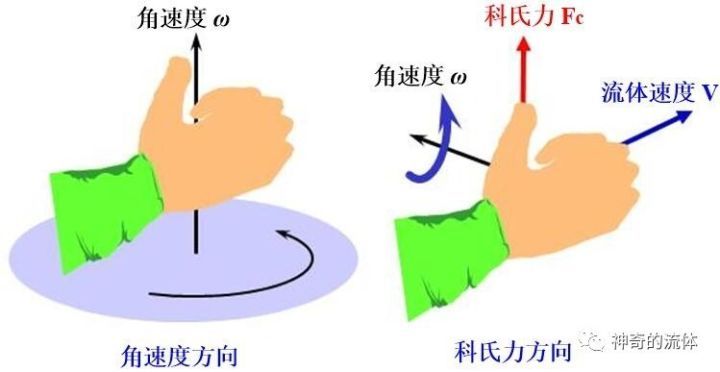
2. Coriolis force direction: the fingers of the right hand (except the thumb) point to the moving direction of the object (in a non inertial system), and then rotate the four fingers to the angular velocity direction. The direction pointed by the thumb is the direction of the Coriolis force.
※※ The phenomenon and application of Coriolis force ※※
1. Burr's law
Burr's Law is a famous law in physical geography, which is summarized from actual observation, that is, the right bank of rivers in the northern hemisphere is steep, while the left bank in the southern hemisphere is steep.
Taking the Northern Hemisphere as an example, in the Earth's rotation (angular velocity) ω) Under the combined action of river flow (flow velocity Vr), the generated Coriolis force Fc causes the river to flow towards the right bank (right-hand spiral rule). Under the obstruction of the river bank, the water on the right bank will be higher than the left bank (the wider the river surface and the faster the water flow, the higher the height). The additional pressure of the river on the right bank makes the erosion on the right bank more severe than on the left bank, and long-term accumulation leads to a steeper right bank.
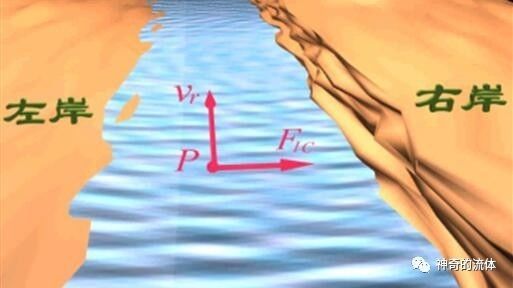
In the Northern Hemisphere, the right bank is steeper in the direction of water flow (image taken from the network)
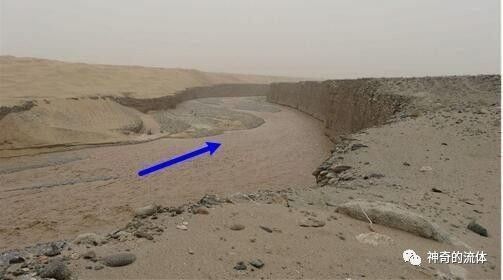
In the northern hemisphere, the right bank is significantly steeper than the left bank (Figure taken from the network)

Beautiful banks on both sides of the Ertix River (picture taken from the network)
General explanation of Burr's law: along the direction of motion, objects in the northern hemisphere are subject to the Coriolis force to the right, and objects in the southern hemisphere are subject to the Coriolis force to the left.
Many interesting phenomena can also be seen in daily life:
People in the Northern Hemisphere often wear out the right side of their shoe sole before the left side, while in the Southern Hemisphere, the opposite is true.
The right side of a car's tire in the Northern Hemisphere is more worn than the left side, while in the Southern Hemisphere it leans to the left and does not deflect at the equator. In the polar regions, it deflects the most severely.
2. Capillo phenomenon
Under the action of the Coriolis force of the earth, the vortex of the leak in the hand basin is clockwise in the northern hemisphere and counterclockwise in the southern hemisphere, which is also known as the "Kapilo phenomenon".
Capillo phenomenon: scientist Capillo found that the vortex formed at the leakage outlet always rotates in a fixed direction when pouring sewage into the sink after each experiment. He made many different shapes of water leaks, but the experimental results were always the same. So he went to various parts of the world to conduct the same experiment and found that the direction of the water flow vortex in the southern hemisphere was exactly opposite to that in the northern hemisphere, it was counterclockwise in the northern hemisphere and clockwise in the southern hemisphere, and almost half of the two situations were found near the equator. Later, people referred to this phenomenon as the "Capillo phenomenon".
In the northern hemisphere, along the direction of the water rushing towards the leak, the water is subjected to a Coriolis force to the right, resulting in a counterclockwise vortex when viewed from above, while in the southern hemisphere, it is a clockwise vortex.
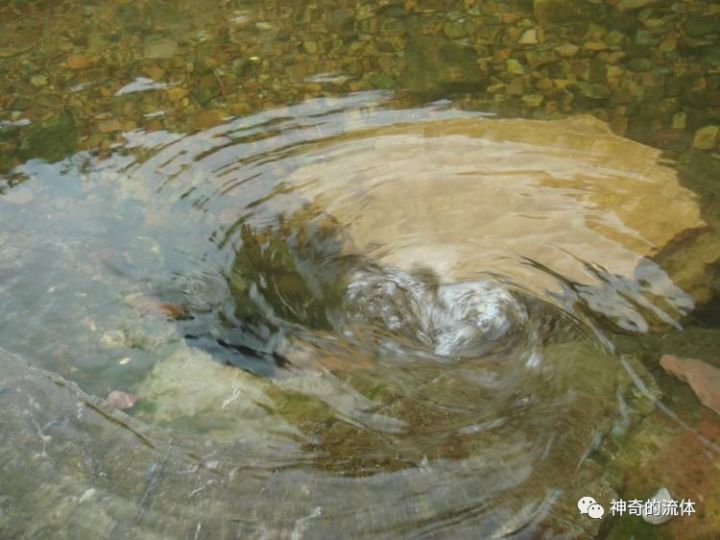
Vortex in Northern Hemisphere Rivers (Image taken from Network)
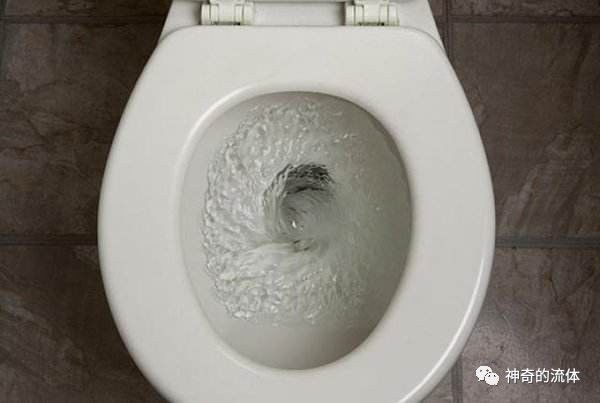
Northern Hemisphere Toilet Flushing Vortex (Image Taken from Network)
In nature, there are also tornadoes and tropical cyclones (known as "typhoons" in the North Pacific) that can be explained by the Capillo phenomenon. Their direction of rotation also follows the above rules and is related to the northern and southern hemispheres.
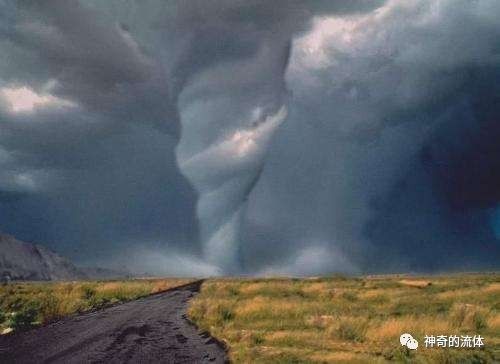
Tornado (Image taken from network)
During the summer and autumn seasons, typhoons often occur along the southeastern coast of China, which are a form of strong development of tropical cyclones.
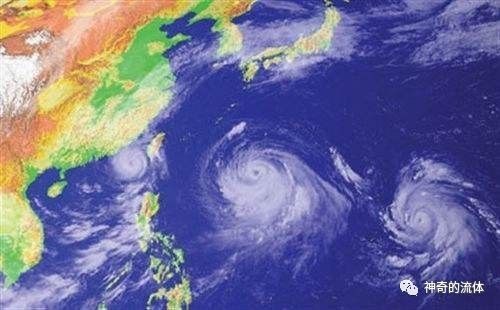
Typhoon (counterclockwise tropical cyclone) (image taken from network)
3. Current flow
Ocean current refers to the relatively stable flow of surface seawater in the ocean in a certain direction on a large scale throughout the year. Due to different latitudes on the Earth's surface receiving varying amounts of sunlight, a series of pressure bands have been formed along the longitude direction. Driven by the pressure difference in these pressure bands, air will move along the longitude direction, generating wind stress on the sea surface, driving seawater to flow and forming ocean currents.
Under the effect of the earth's rotation, the movement of the ocean current along the longitude direction will be affected by the Coriolis force and deflect to the east or west. It can be seen from the principle of Coriolis force action that the current in the northern hemisphere deflects to the right and the current in the southern hemisphere deflects to the left.

Current flow direction (clockwise in the Northern Hemisphere, counterclockwise in the Southern Hemisphere) (Figure excerpted from the network)
The drifting route of "Yellow Duck" driven by ocean currents also strongly supports the existence of Coriolis force force caused by the earth's rotation.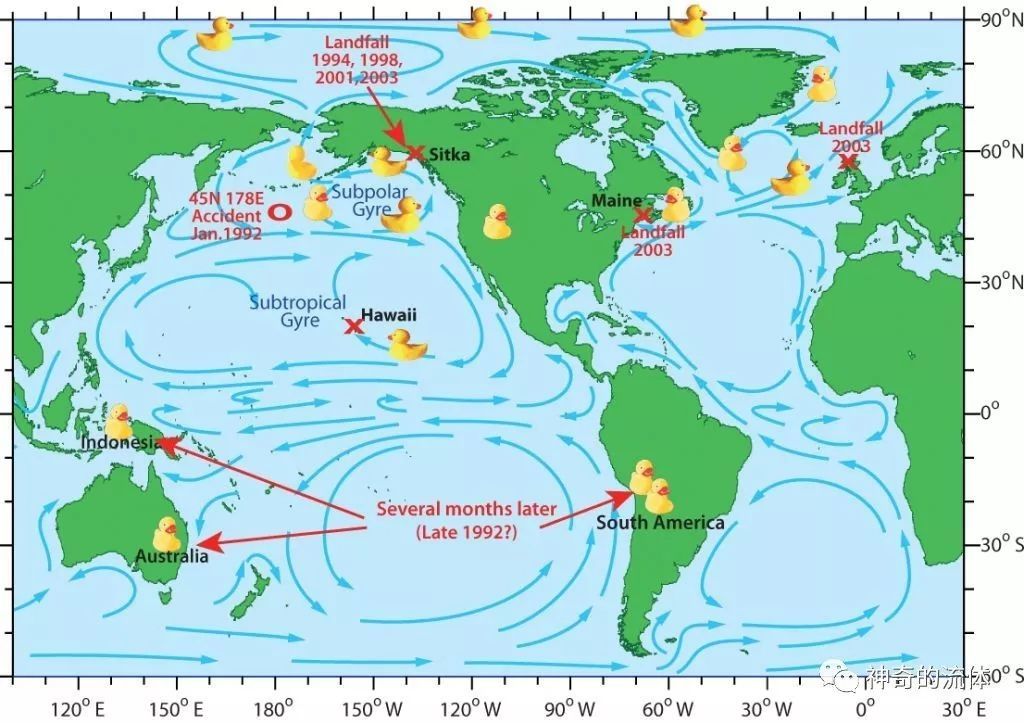
The Drifting Route of the "Yellow Duck" under the Action of Ocean Current (Figure excerpted from the Network)
4. Mass flow meter
Mass flow meters measure the mass flow rate of fluids based on the Coriolis force principle. Although the pipeline shape of different models of mass flow meters may vary, the measurement principle is the same.
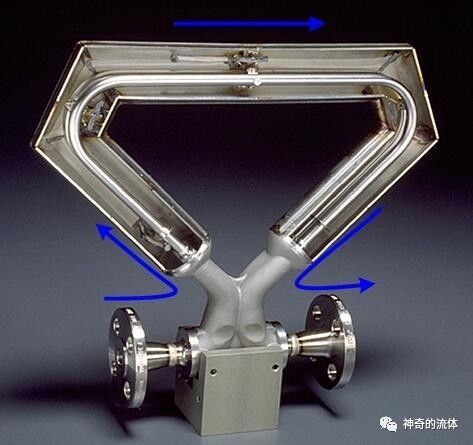
Structure diagram of Micro Motion mass flowmeter
Measurement principle: allowing the measured fluid to pass through a rotating or vibrating measuring tube, thereby driving the fluid to generate a fixed angular velocity ω, When a fluid with a certain mass m flows along a rotating or vibrating measuring tube at velocity V, a Coriolis force Fc will be generated that causes the measuring tube to bend. According to the Coriolis force formula Fc=2mV ×ω It can be seen that the Coriolis force is directly proportional to the mass m and velocity v of the moving fluid, that is, directly proportional to the mass flow rate (product of mass and flow rate) of the fluid. Therefore, the mass flow can be measured by measuring the Coriolis force acting on the pipeline.
5. Coriolis resistance moment in lubrication systems
In engineering applications, represented by the fluid viscous clutch, the unit friction disc transmission system (single friction pair) can be regarded as a system of fluid moving radially in a rotating coordinate system.
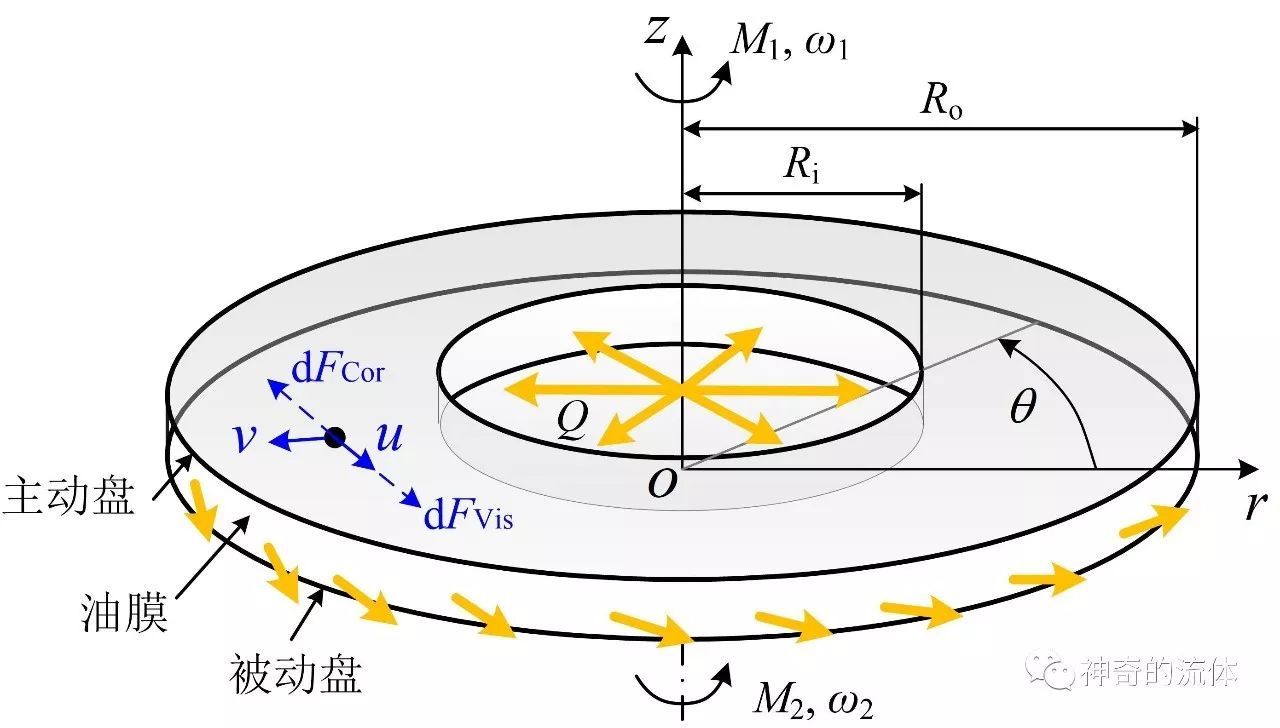
Rotating parallel disk model
Under the action of rotation (angular velocity ω 1 and ω 2) Under the combined action of radial flow of lubricating oil (v), a Coriolis resistance dFCor will be generated in the opposite direction of the driving force dFVis, reducing transmission efficiency.
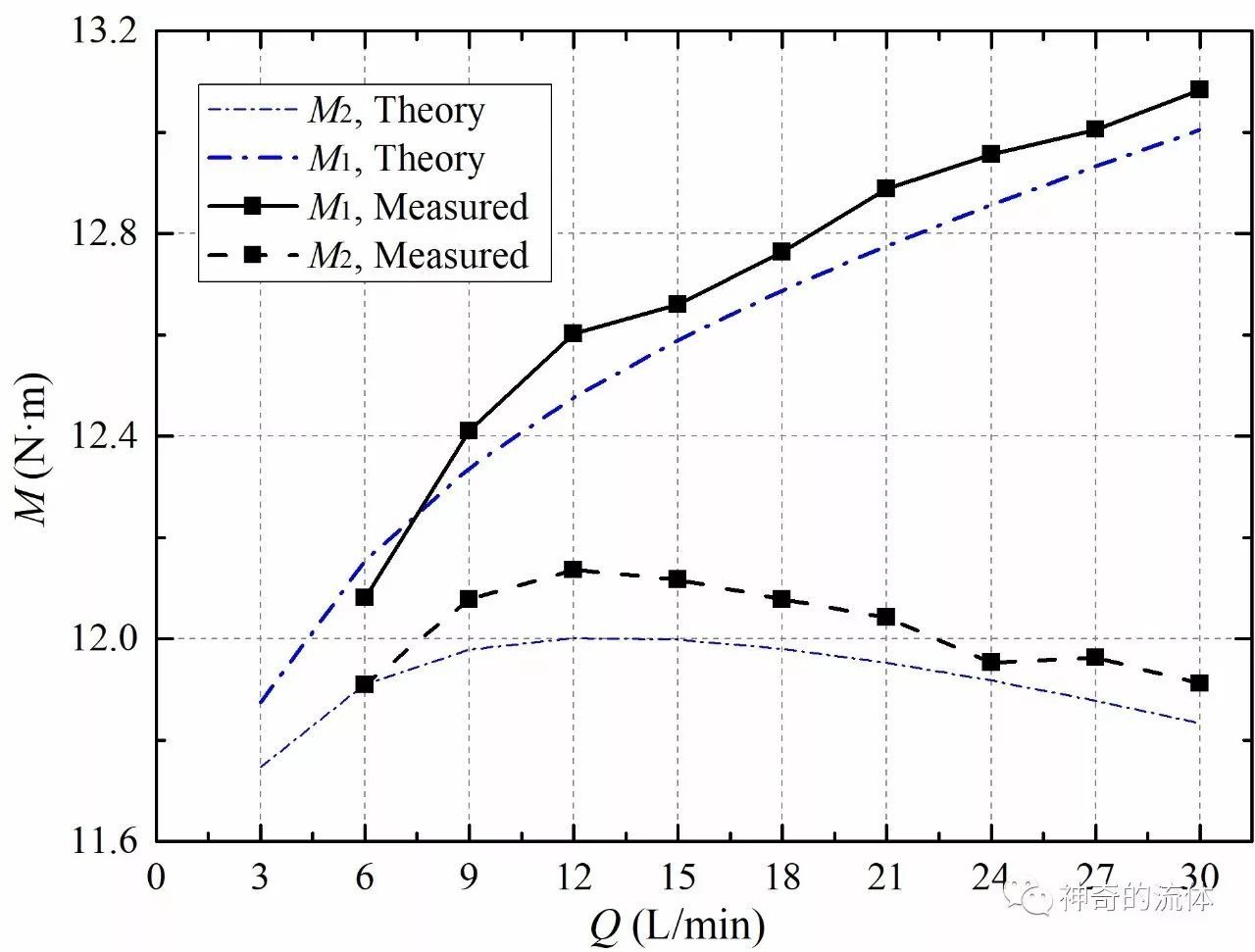
Relationship between torque and radial flow rate
Through theoretical and experimental research, it has been found that the larger the radial flow rate Q, the greater the tangential Coriolis resistance moment, resulting in a larger required input torque M1 and a smaller output torque M2, thereby reducing transmission efficiency. Therefore, special attention should be paid to the control of the Coriolis resistance moment in the application of liquid viscous transmission of rotating discs.
